Let me make something clear up front: the point of this blog post is not to give you tips on how to dress. The point is to help you think about how you discuss clothing in your writing.
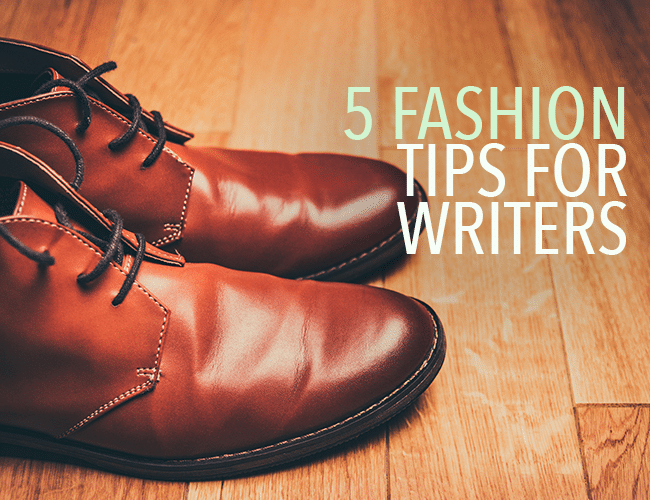
Recently I discovered this amazing podcast called Writing Excuses. Specifically, I listened to an episode called “Fashion for Writers,” featuring fashion guru Rebecca McKinney, and I could not not share what I learned. This is partly because it was useful and partly because I could see a lot of people dismissing the topic as irrelevant to their work (which they definitely should not!). A great clothes description can make your characters spring vividly to life.
Take a look at what I learned, and tell me what you think.
You Can Learn A Lot By A Person’s Clothing
A person’s clothing can tell the reader a lot about a character in a few short sentences. You can learn something about her age, social economic situation, personality, and more.
McKinney points out that if a woman walks into a room wearing a fuchsia dress, for example, you can be pretty sure that person is not a wallflower. You can alert your audience that she likes attention, is confident, and host of others things with two short words: “fuchsia dress.”
Take advantage of this opportunity.
Consider the Economy of Your Character’s Clothing
Without giving some thought to your character’s clothing, you may end up putting a struggling Ph.D. student in an expensive Brooks Brothers shirt. Unless you can explain the paradox (e.g., he used to work at an investment bank), it just doesn’t make sense.
Another question to ask is, do your clothes and fabric work with the region in which your work takes place? Or, do they work for the time period? The podcast hosts pointed out that, while fabrics such as cotton may be relatively cheap in the United States, they're considered a luxury in other parts of the world. Similarly, if certain material was scarce in a specific time period, the average Joe probably wouldn’t have access to it (even if it’s ubiquitous today).
Think about how much your character's clothing costs and whether it is consistent with his background, location, time period, and everything else we know about him.
Use the Correct Words to Describe Clothing
We can get away with being imprecise about clothes in our real lives, but that doesn’t work when we’re writing.
As McKinney points out on the show, it’s incorrect for a person to play with the “weave” of a sweater because sweaters are knit (who knew?). The fashion guru also seemed to shudder at a writer’s use of the word “tool” when he meant “twill.”
Using the wrong words can hurt your credibility. Conversely, knowing the right word can strengthen the image you’re trying to draw with your words.
Not sure how to write a good clothes description? One resource the hosts recommended for figuring out exactly what things are called is the Reader’s Digest Complete Guide to Sewing.
Different Characters Should Describe Clothing in Different Ways
If your character is in an industry where it is expected that they be thoughtful about clothing, then that character should notice a person’s clothing. A person working as a stylist may notice how a jacket fit, for example. A partner at a law firm might notice how much a jacket cost.
Alternatively, you may have written a character who tends not to notice anyone’s clothing, ever. To me, that actually presents the greatest opportunity because when he does notice a new necklace or a recent shoe shine, it signals to the reader that that it is significant.
Resources Exist to Help You Describe Clothing
To brush up on your fashion/clothing knowledge, the hosts recommend the following:
- Reader’s Digest Complete Guide to Sewing
- Historic Costume for the Stage by Lucy Barton
- The International Costumers’ Guild
- Fashion Sketchbook by Bina Abling
Clothing can be an incredibly useful tool for characterization. Even if your story doesn't star a fashion designer protagonist, paying attention to relevant details of the clothes in your world will enrich your readers' experience.
Do you have any fashion tips for writers? Let us know in the comments.
PRACTICE
Look at the people around you or browse the web for an image of someone. Then take fifteen minutes to describe a person’s clothing. What do they tell you about that person?
When you're done, share your practice in the comments, and don't forget to leave feedback for your fellow writers!
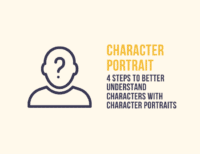
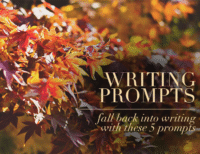
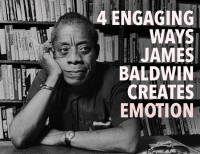
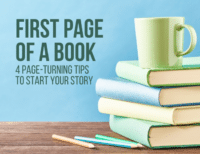



Sweaters can also be crocheted, but that’s uncommon in store-bought sweaters unless they’re lacy. Lace is often crochet, but lace can also be sewn, knit, or tatted (and there are visible differences among them, if you know what you’re looking at). When the edging differs from the fabric, often that edging is crochet and the fabric is knit. Thus why they unravel differently.
But aside from that, clothing is a great opportunity for illustrating differences, too, or even the observer’s personality. Like, is the skinny-jean-wearing grandma something they just notice matter-of-factly, find neat, or not notice at all (and the reader learns because someone else makes a snide comment)?
The fit and age of the clothing also reveal things about a character. Do they wear things too small, well tailored, well fit, or way too big? Each one can dance with other details to reveal things about a character.
Agreed! Thanks!
I was reading J.K. Rowling’s – I mean, Robert Galbraith’s – In Defense of Evil this morning. If you are looking for a good description of clothing as an example, I think that she does a wonderful job in sections where Strike is noticing things about the people he is investigating. And, as mentioned in the article here, they are very revealing about the character’s personality and circumstances.
JK Rowling/Robert Galbraith is great at those quick early descriptions. I actually went back to the Strike novels when I was working on my novel and trying to figure out how to describe characters without slowing down the plot too much. Also, I think the book is “Career of Evil”- I just checked because when I saw a title I didn’t recognize I got super excited she came out with a new Strike novel lol.
Haha, yes you’re correct! I have NO idea where “In Defense of Evil” came from. I’m definitely reading “Career of Evil!”
I always thought that Bret Easton Ellis did a great job of incorporating fashion description in American Psycho. That was far from being my favourite novel, and reading it did cost me a lunch or two, but the contrast between the sumptuous fashion descriptions and the gory violence was a large part of what kept me reading.
That would be a good advice.
Great ideas and resources. I was very fussy about clothing in my recent novel. I even went shopping 🙂 My male protagonist (a very sexy but unassuming young guy) wears Guess combat boots and gorgeous, flowing silk/rayon blend shirts that drop off his shoulders just so (always open a few buttons ;). Shirts and skinny-ish jeans from Nordstrom. Underwear is almost always ultramarine silk bought in packs of three at Macy’s lol (not kidding :). Female protag wears white linen blouses from LL Bean and Levi jeans. She’s 10 years older, but they both wear Chuck Taylors for casual.
With “tool” vs. “twill,” is it possible that “tuile” or “toile” was meant? I don’t know the difference but I’ve heard of it 🙂
In my current project, I’m hardly mentioning clothing (war, poverty) except for her pink coat from days gone by. She clings to it for hope, so I don’t want to take the focus off of it except for brief descriptions here or there.
Glad to read this, and I’ll keep your suggestions in mind.
Love this Leah. I don’t tend to mention the stores where things are bought but it’s a great idea
Thanks! I don’t mention the stores either, not in the novel. And I don’t even get into describing the clothes all that much though they’re important, especially for her as she makes changes from being a corporate employee to artist. The stores are just where I went shopping to get them dressed (and so I could see them/understand them better! 🙂
My male lead is a corporate manager and equally comfy in both a suit or hiking gear, while my female lead is a work from home artist/ designer, so I understand 🙂
We should have them meet! Any chance they’re in the Philadelphia area? haha 🙂
Right this minute (I’m about 2 weeks out from finishing the first draft of their 2nd book) they are in London, but usually they aren’t far from Philly 🙂
Hmm. My female lead will study in Provence in the sequel, and the guy could wander off to London … oh the possibilities… 😀 Feel free to get in touch if you have even a tiny bit of interest! My blog/contact is in my profile.
I’ll definitely have a think about it 🙂
I love the idea of so much meaning in a specific item. “Pink Coat”….great.
I enjoy reading how authors integrate clothing of their characters, not all in one go, as a descriptive paragraph, but cleverly woven into their actions or dialogue.
I’m reading a book, (a birthday gift), Raven Black, by Ann Cleeves, and I turn back to re-read the way she shows the clothes her characters wear.
Thank you for your article and suggesting books on clothing for characters, which I will access.
Fascinating article! I was always told to judge a man by looking at his shoes….
From my vantage point I couldn’t tell how old the young women was; 15, 25? She wore a large white silk flower in her wavy, dark hair, the only item that didn’t appear tattered. Her threadbare torn jeans needed washing and the oversized sweatshirt made her look small, lost within her own clothing. She constantly slipped her heel in and out of her lace-less tennis shoes, rotating between chewing on her nails and sitting on her hands. My anxiety level shot up just watching the poor thing. I’d never seen anyone who needed rescuing so bad. The question was rescuing from what.
I love this!
In my first book my main female character is shy and not confident in herself because she is a little bigger and curvier. For her first date with a new guy, she puts on a cute wrap dress she bought that is flattering, low-cut and bright red. She feels uncomfortable in a dress that makes her ‘attempt to be sexy,’ like it’s too obviously wanton. At the last moment, she takes it off and borrows a modest navy cotton dress from her 60-year-old friend! It’s the type of dress a middle aged, frumpy librarian would wear. She sees herself in that way, and doesn’t feel she deserves sexy-looking clothing.
Error…oops
When we’re born, who chooses our paths in life? Well, sometimes we do but other times those paths are chosen for us. The wise and strong know there is a fundamental difference, but are nonetheless totally focused on the task rather than who made the call.
Please join bestseller writers group http://facebook.com/bestsellergirl
It’s a great article.
I am fashion designer and i love your blogs so keep it up to writing and again thank you for sharing the article